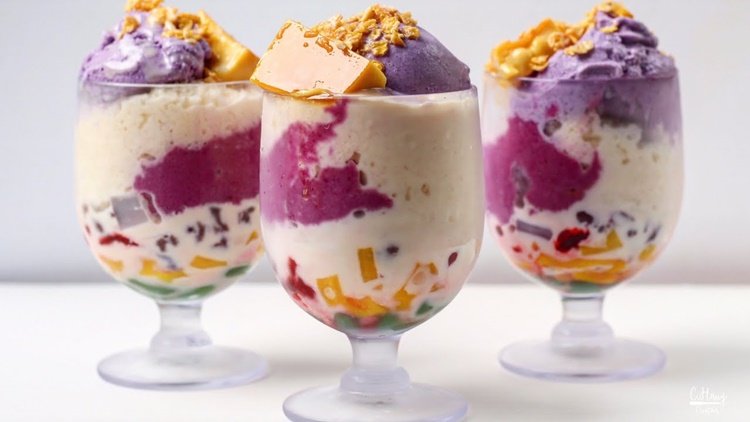HALO-HALO – Here are the things that you probably didn’t know about this popular Filipino dessert.
Halo-halo is a popular cold dessert in the Philippines, enjoyed by many Filipinos. It was composed of crushed ice, evaporated milk, sugar, gulaman, ube, sago, leche flan, and other fruits.
These ingredients could vary depending on personal choice and regional variances. This mouthwatering delicacy is typically served in a tall clear glass with a long serving spoon. Special variants include a scoop of ice cream and cereal, providing a delicious experience.

Before eating halo-halo, it is normal to properly mix all of the ingredients, so that each mouthful consists of a harmonious blend of flavors and texture. This famous Filipino delicacy is enjoyed year-round, particularly during the hot summer months, and provides a wonderful and fulfilling treat for individuals of all ages.
The origins of halo-halo can be traced back to the pre-colonial period when Filipinos creatively used indigenous ingredients to create refreshing treats. Early versions of halo-halo likely included shaved ice mixed with native fruits, sweeteners, and other locally available ingredients.
A dessert called monggo con hielo, also called mongo-ya, was one of the first forms of halo-halo. It was made entirely of mung beans instead of Japanese red azuki beans, boiled and cooked in syrup and served over crushed ice with milk and sugar. This dish was derived from the Spanish Filipino dessert maíz con hielo.
The modern version of halo-halo that we know today began to take shape during the American colonial period in the early 20th century. American soldiers stationed in the Philippines introduced ice-shaving machines, which revolutionized the process of making icy desserts.
Japanese migrants introduced ingredients such as sweet beans and agar jelly, adding depth and texture to the dessert. The post-World War II era saw the rise of halo-halo as a staple dessert in Filipino households and eateries.
It became an integral part of Filipino cuisine, enjoyed during festive occasions, family gatherings, and even on ordinary days. In the following decades, the dessert continued to evolve to cater to changing tastes and preferences.
Today, halo-halo remains a beloved icon of Filipino culture. It is enjoyed in homes, restaurants, and street food stalls across the Philippines and has also gained popularity in Filipino communities around the world.

